When it comes to the classic patterns of menswear, those based on the geometry of the square–checks, grids, and plaids–have a long history that remains popular today. In this primer, we’ll discuss the different kinds of square and rectangular patterns in tailored clothes and show you how to “check yourself” without wrecking yourself.
Because men typically want to project a serious, businesslike demeanor when wearing tailored clothes, the most popular patterns are not overly ornate but are based on the simple geometry of the line: one being stripes, and the other checks. These two basic patterns can create greater interest than simply wearing solids while still looking subdued and formal, though there is always the opportunity (or risk!) of making them quite bold.
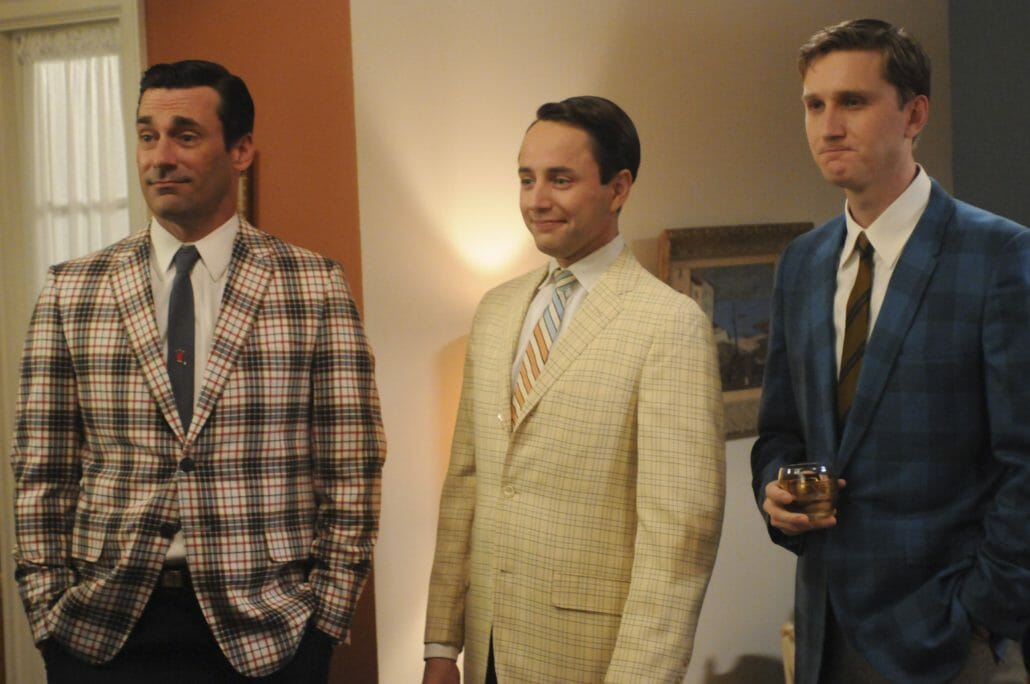
What are Checks?
Checks are defined by horizontal and vertical lines that cross one another at right angles, forming squares or rectangles on the cloth. Therefore, they are always more complex than stripes, which also means they tend to be bolder and more informal. The particular ways these lines intersect and the combinations of colors used to create different named patterns, which we will discuss below, though, for convenience, I will use the word “check” as an umbrella term that includes all patterns that are based on these intersecting lines.
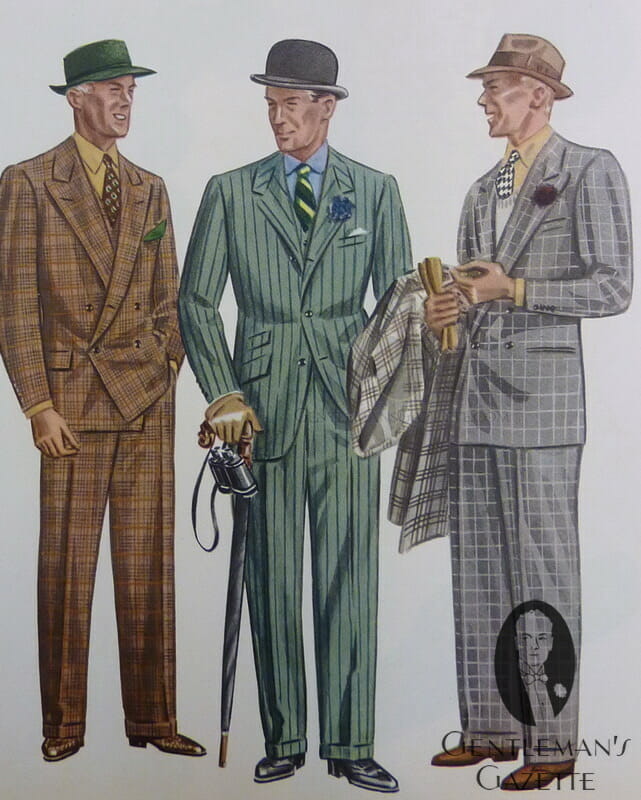
Types of Checks
1. Graph Check
The simplest pattern based on squares is an evenly spaced grid made up of thin lines in a single color, called a “box check” or “graph check” because of its resemblance to graph paper. Graph check usually appears on shirts, and probably the most common version is a white shirt with a navy blue grid, making for a pattern that is definitely conservative and office appropriate; however, red, green, yellow and other colored grids can also be found. Usually, the boxes of a graph check are small, around a quarter inch, and the rule is that bigger squares make the shirt more casual.
Small boxes easily accommodate a tie, because the simple pattern doesn’t assert itself that much. If the grid is larger, say 3/4″ to 2″, the look seems more casual. You can still wear a tie, perhaps a knit tie from Fort Belvedere, or something with texture, but an open collar looks good too with a larger grid, especially in warm weather. Whatever the size of the grids, properly lining up the rows of squares on the parts of a shirt that are made from different pieces of cloth, like where the shoulder and sleeve meet, would be a hallmark of quality to look for.
2. Windowpane
When a graph check contains larger squares, the pattern may be referred to as windowpane, referencing windows that have divided panes, which are rarer today than they once were. The term isn’t used as much for shirting as for tailored clothes: odd jackets, suits, and waistcoats. Windowpanes have supposedly come back into style in recent years, but true menswear aficionados know it’s a classic pattern that has been around for a long time. Although similar to the graph check, the grid formed by the crossing lines of the windowpane pattern often creates rectangles rather than perfect squares. These rectangles are always longer in the vertical dimension, tall rather than wide, which can create a subtle sense of added height in the wearer.
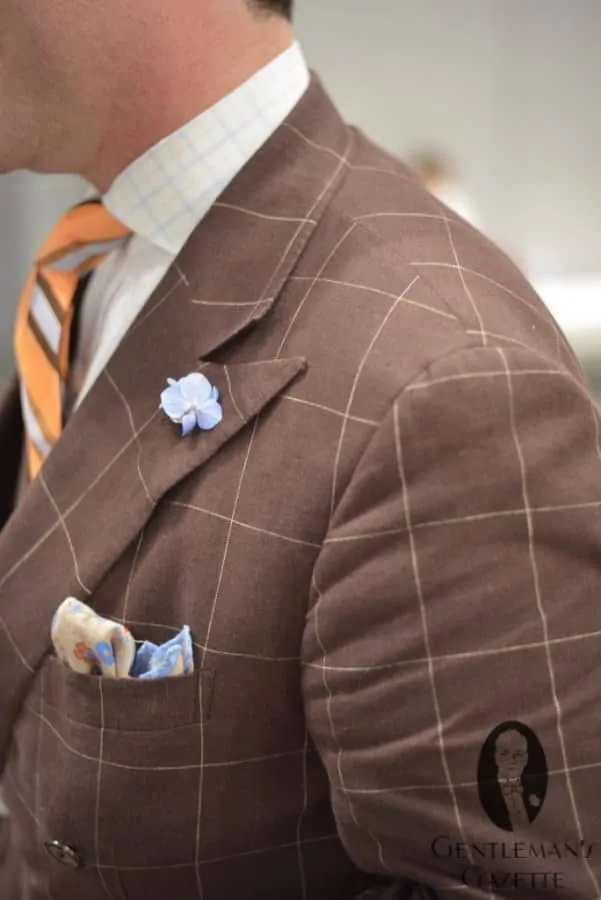
The lines forming a windowpane can be softly or strongly defined, broken up or even doubled. You can have a white grid on a blue base, blue squares on brown, beige on grey or any variety of complementary color pairings. The color of the panes and how defined the lines determine how bold or conservative the result is. Solid lines in bright colors are more assertive than muted lines. The density of the boxes also has an impact. If the panes are large on a jacket, it is can be more conservative than one with numerous panes since the multiplication of boxes makes the pattern louder.
3. Tattersall
Next up in terms of complexity is tattersall, which is the same as a graph check but it involves lines of two or more different complementary colors. Some possibilities are blue and black, green and blue, red and blue, or orange and blue to name just a few. The lines that make up a tattersall can be of different thicknesses or solidity, being clearly defined or faded back, but the size of the squares they form is always uniform.
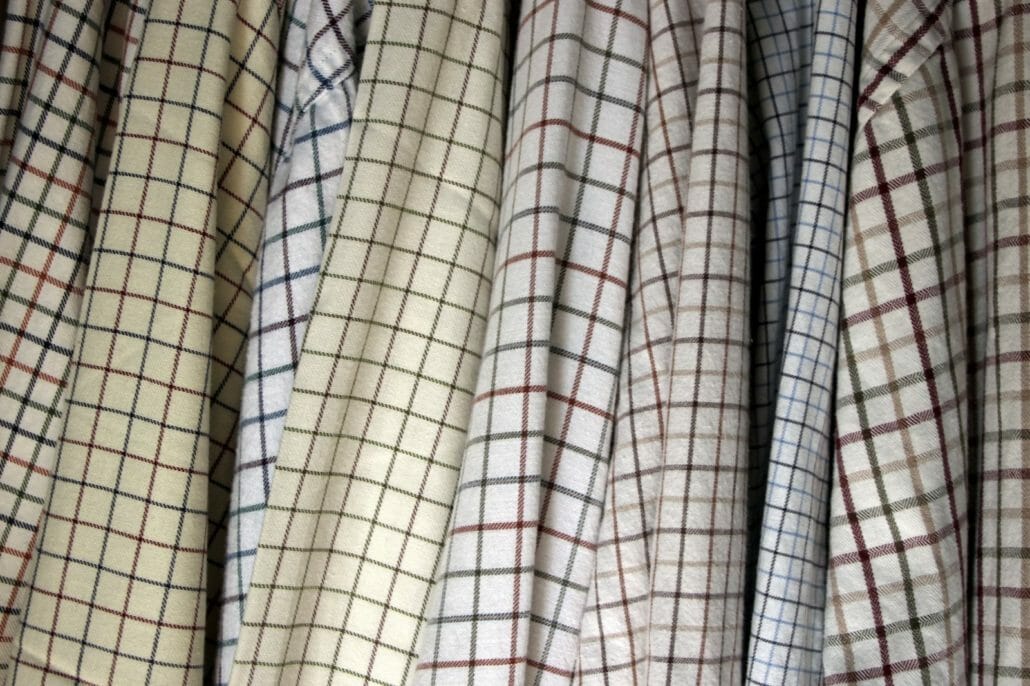
Tattersall is actually named for Richard Tattersall, groom to the last Duke of Kingston, who founded a London horse market in 1766 that is still the leading auctioneer of horses in Europe today. Specifically, fabric in the pattern known as Tattersall was used for horse blankets in the late 18th century before seeing more widespread use.
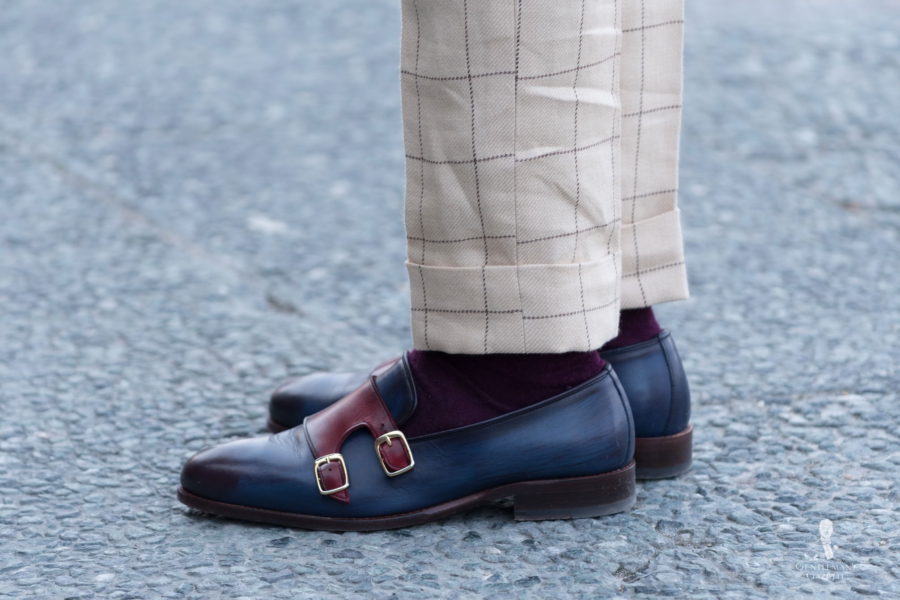
Tattersall is mostly used for shirts and waistcoats, such as those sold by Cordings of Piccadilly, and has a traditional association with British country style, which is not surprising given its origin. Tattersall can be worn for rural pursuits, like shooting or fishing, perhaps with a horse or bird print tie, flat cap, and a tweed sports coat. As a vest, the typical tattersall has red and blue crossing lines on a buff or yellow ground, and wearing one is an appropriate homage to a classic style.
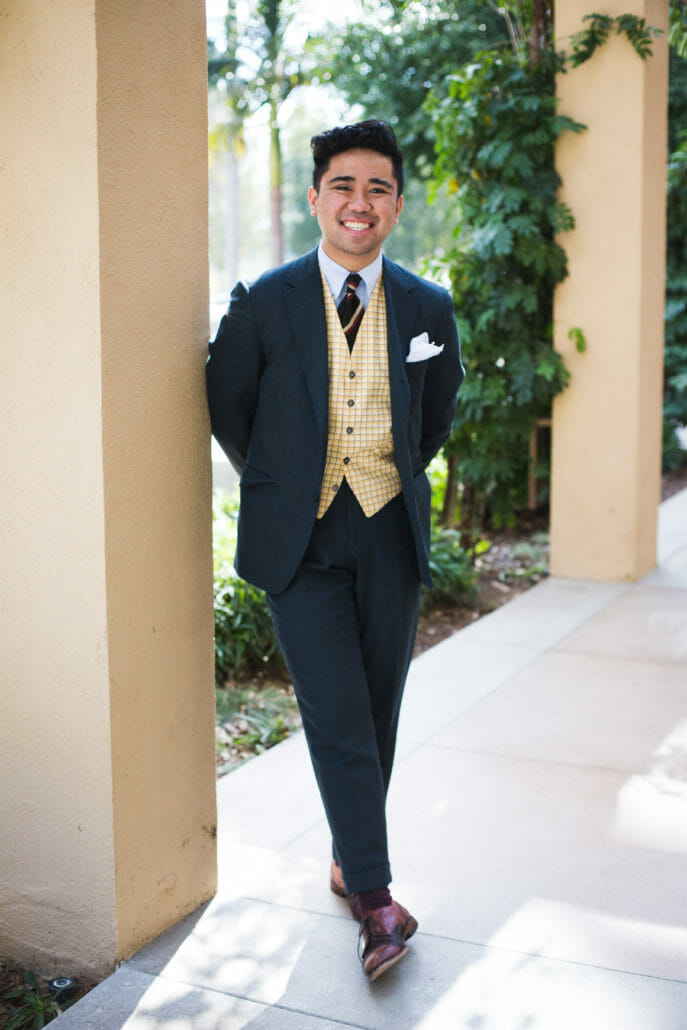
Yet, despite these associations, tattersall shirts have translated easily to office settings both in North America and the UK. This may be because the lines of two colors add to its versatility in combining ties. Less common is the Tattersall sports coat, though I own a couple for spring and summer wear, one with brown and beige lines and the other with two different shades of blue. To me, these have more of an Italian flavor.

4. Gingham
Gingham (sometimes called “Vichy” in Europe) is the simplest of the checks involving thicker lines, in this case, generally a single color crossing on a white background. Blue tends to be the most popular, though many colors of gingham are possible. The distance between lines is always regular, so the result looks like the typical checkerboard and is most often featured on shirts. An interesting aspect of gingham is that when the colored lines cross one another, they result in darker versions of the color, adding richness.
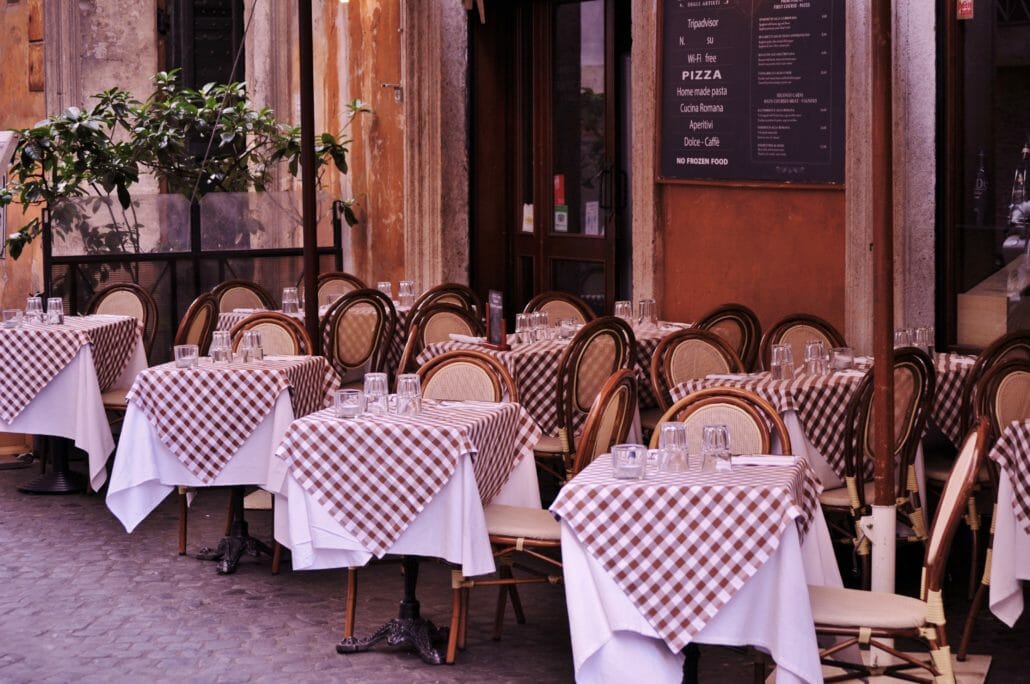
For many, gingham may evoke thoughts of picnic blankets or the red and white tablecloths in an Italian restaurant, and thus men who wear gingham are sometimes mocked by those who are ignorant of style. Nonetheless, the association of gingham with casual dining speaks to its nature as a casual fabric. It is also identified with rural simplicity, at least in the American imagination, a connection emphasized by the fact that Dorothy in the Wizard of Oz film wore blue gingham as did Mary Ann on Gilligan’s Island.
I personally associate gingham shirts with summertime and wear them by repeating the colors of the pattern in my other articles of clothing. For example, you could wear a green and white gingham with off-white pants and an olive green linen sport coat, or a blue and white gingham with navy chinos and an off-white jacket.
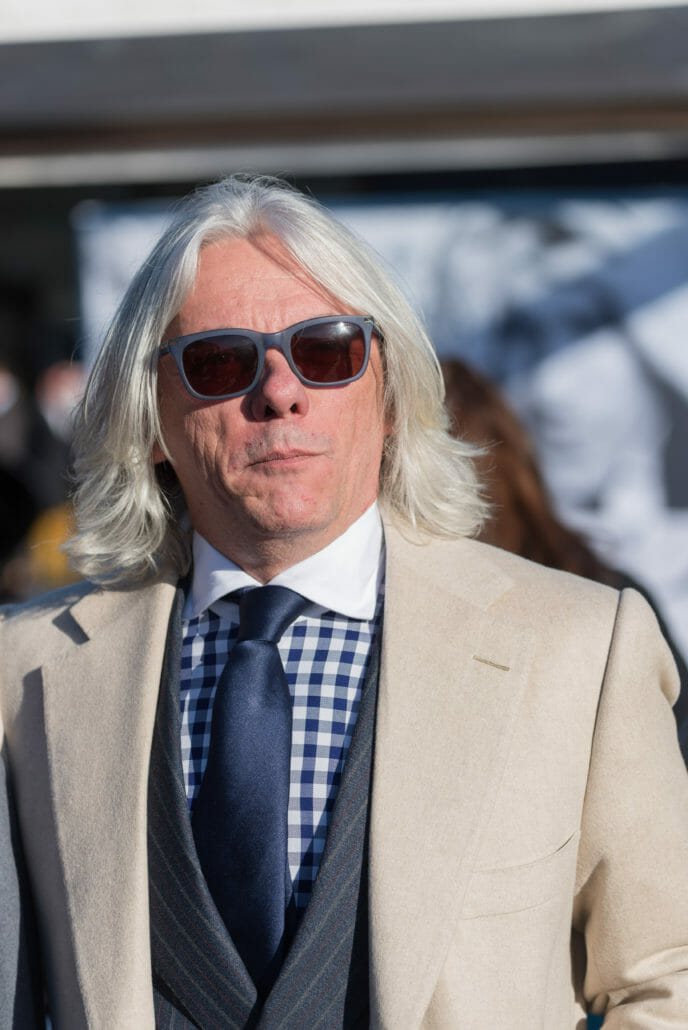
5. Shepherd’s Check
As its name implies, shepherd’s check is another rural pattern, this one originally used by Scottish shepherds on the border with England, so we have one check that originated with horse blankets (Tattersall) and another with sheep blankets. Shepherd’s check looks almost like a gingham but is distinguished by the visibility of a twill pattern. That is, you can see diagonal lines intersecting the squares, which makes the pattern more complex.
As with gingham, shepherd’s check usually appears as a single color on a white ground. Though it can be used on any article of clothing, in contemporary tailoring I have seen it most frequently on ties followed by jackets.
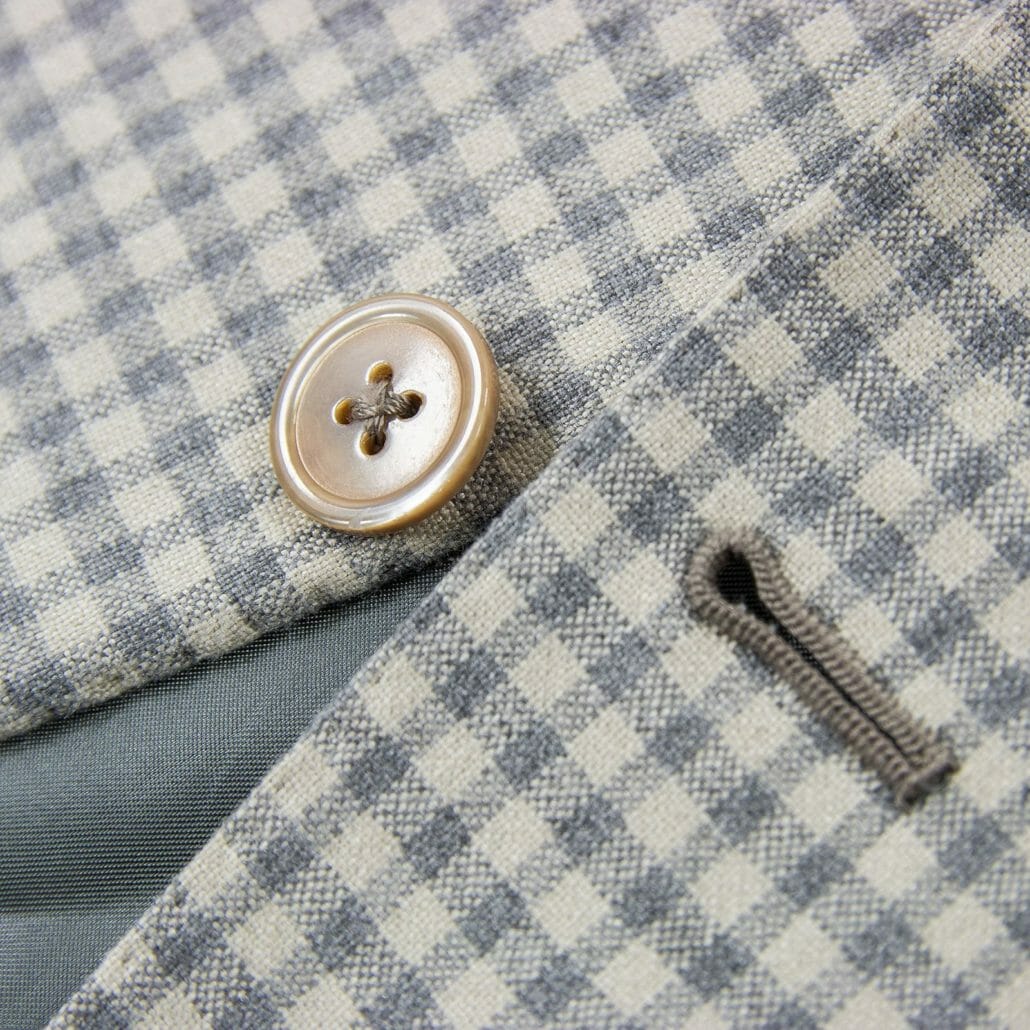
6. Gun Club Check
A connection to the country pursuit of shooting is embodied in the gun club check, though this time in America. This check is again of Scottish derivation, a “district check” typical to a particular area in the west Highlands. However, it was adopted by the American Gun Club for their overcoats and sport coats in 1874.
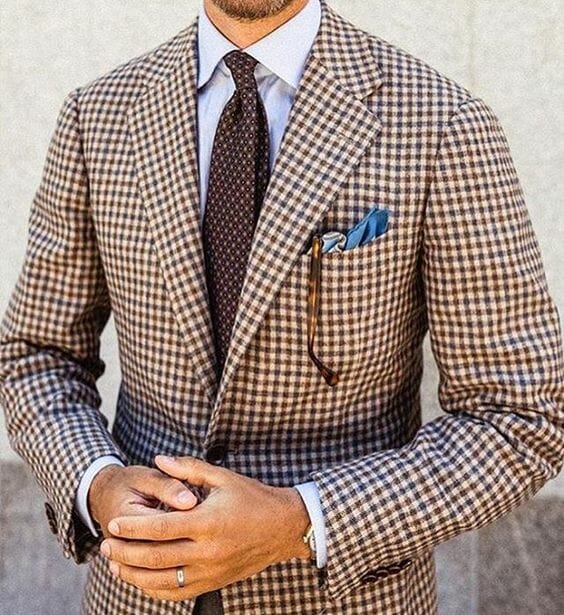
Originally, a gun club check meant four colors of crossing lines–black, rust, gold, and green–designed as both an homage to the colors present in the landscape of the Highlands (similar to the nature of tweed) and as a kind of hunter’s camouflage; however, these days, it’s equally common to find gun club checks in only two colors, usually brown and blue. Like gingham and shepherd’s check, the lines in a gun club check are even and fairly thick, and like shepherd’s check, the diagonal twill pattern is visible. What makes gun club check unique is the presence of two or more colors, though such patterns may also be labeled shepherd’s checks, so identification can be tricky.
7. Tartan (“Plaid”)
The most complex checked pattern in menswear is tartan, formed by intersecting lines of varying thickness and any number of colors. Though it is not always the case, usually the squares and rectangles on a tartan are different sizes because the space between the lines does not have to be even. This flexibility, and the fact that new tones are created when different colored lines cross, allow for a great variety in the appearance of tartan cloth. To make matters more complicated, in North America the word “plaid” would be used to describe what is called a “tartan” in the UK, while “plaid” is used there to describe any sort of checked pattern.
Of course, tartans are associated with–you guessed it–Scotland, where individual patterns represent specific clans. Given the brightness and busyness of tartans, they are casual in terms of everyday wear. Because the pattern is quite variable, many versions of plaid can be worn for sport coats, especially ones with evenly spaced squares, but, unless you are daring, traditional tartan (like Blackwatch) is worn best as a shirt (without a tie), accessory items (ties, scarves), if not a kilt.
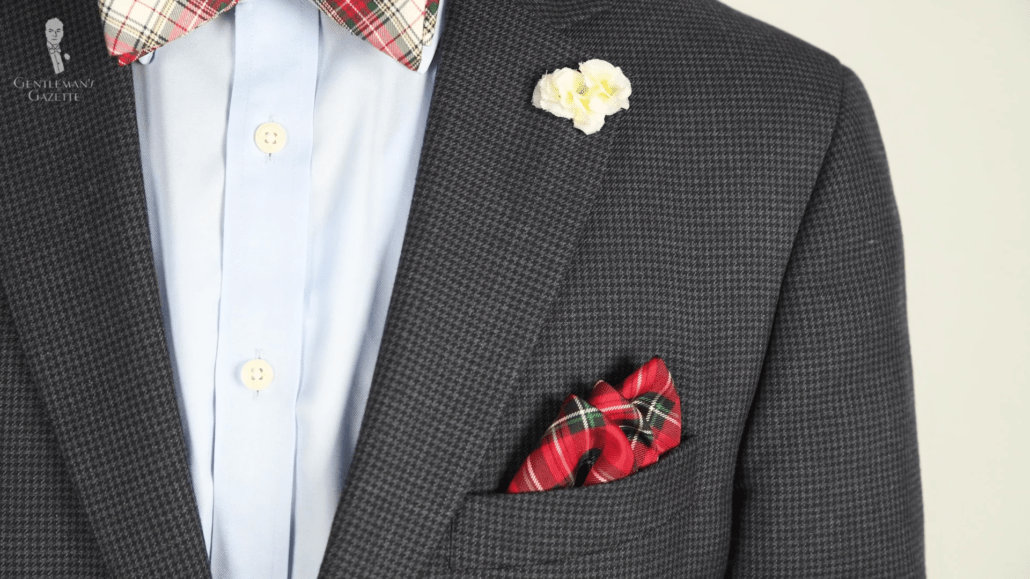
In the United States, tartan shirts may be identified with cowboys and lumberjacks, especially when they’re made of flannel, reinforcing the rustic associations of the cloth. However, in Scotland and the UK, the tartan can be worn during highly formal occasions, such as at the Queen’s Garden Party, because it represents Scottish national dress.
8. Madras
The most famous plaid of non-Scottish origin is madras, an intense, bright, warm weather fabric that isn’t for the man who wants to fade into the background. Named after the city in India where it is woven (modern-day Chennai), Madras is a handwoven slubbed cotton. It resembles Scottish tartan in terms of patterns but incorporates colors more commonly found in Indian textiles, like yellow, pink, and orange, which are suitable for summer. Check out the Gentleman’s Gazette madras guide for an account of its fascinating history and how it became especially popular in the United States.
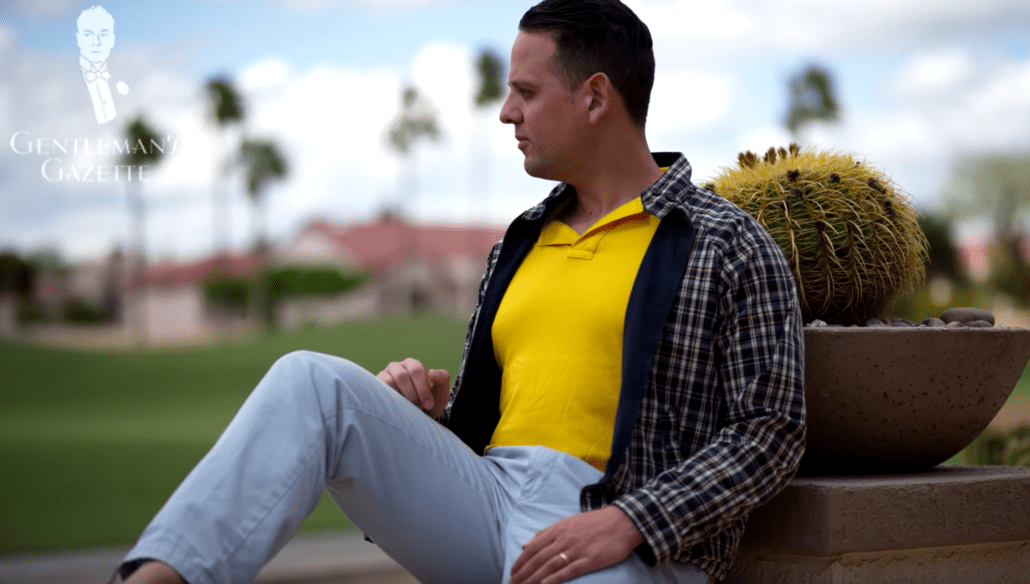
9. Glen Check and Prince of Wales
Finally, we have glen check (sometimes also called glen plaid), which I mention last because it isn’t what I would consider a pure check if we are talking only about grids since it admits more than just lines; it also contains varied houndstooth patterns making up the lines and filling the blocks created by them. However, given its name and the fact that the crossing pattern of rectangles is visible, it definitely deserves a mention here as one of the most popular patterns in menswear.
We could easily dedicate an entire article to the glen check and its history, though for now, suffice to say the pattern was first developed in Scotland (where else?) by Elizabeth Macdougall as her estate check, before the future Edward VII noticed it and fell in love with it.

The closely associated Prince of Wales check actually fits more with our definition of checks as it is essentially a glen check with the addition of an overcheck or overplaid in a different color. This is a grid of a contrasting color, a windowpane pattern, superimposed on top of the glen check to give it even more depth. Overplaid is a popular manifestation of checks in tailored menswear, and it’s a great example of how rich and complex checks can be.
How Do You Wear Checks?
In the world of tailored clothing, checks can be worn in many ways, but the choice depends on your personality and how much you like loud, bold patterns in your wardrobe.
Shirts
Checked shirts are usually a safe choice. If you want something restrained that’ll easily pair with a tie, a standard single-color graph check is a good option. Even safer is a mini- or micro-check, in essence, a gingham but on a very small scale that reads as a solid from a distance. Moving toward smart casual or business casual, try a tattersall with a tie. For totally casual, tieless looks, choose ginghams and Madras in warm weather and flannel tartans for winter.
On the other hand, if you want to forget about playing it safe, go for a checked shirt with a checked jacket over it to repeat the pattern. Consider how prominent the pattern of your shirt is when choosing a tie. Solid color ties are a safe choice, but you could also try a tie that has a similar repeating pattern on a different scale (larger or smaller circles or squares, for example).
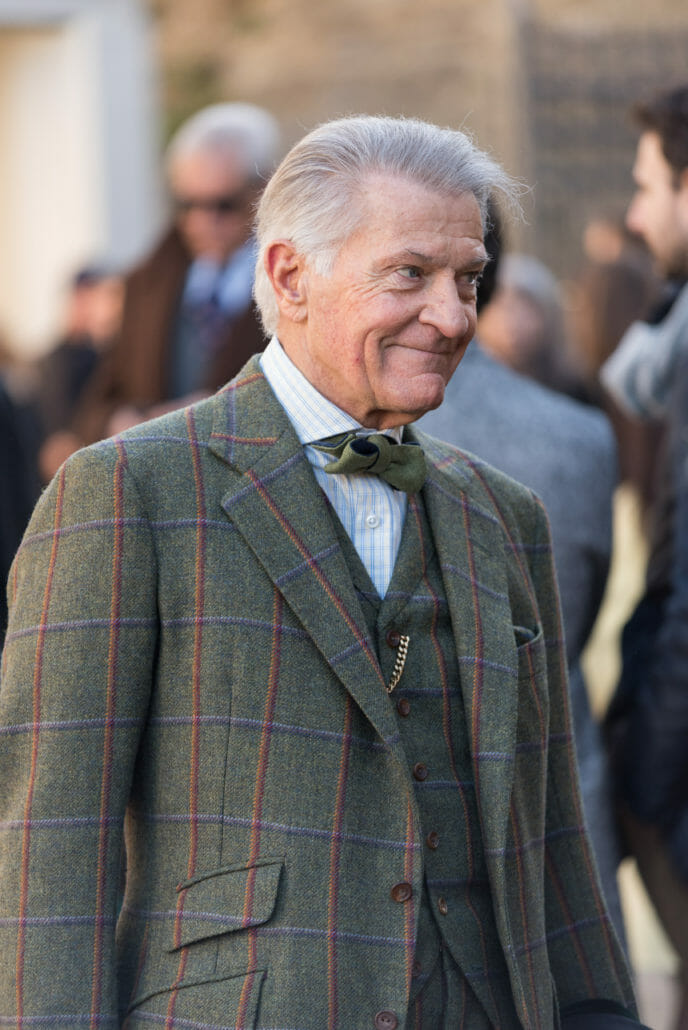
Jackets
Checks on a jacket are always a bold statement though the features of the pattern determine exactly how much. How intense a check appears, especially a windowpane, depends on the strength of the lines. For example, if the grid of a windowpane jacket features solid or bright lines, it will come across more aggressively than one made up of muted lines or soft colors, so keep that in mind when choosing a jacket, and try it on to see how you like the effect. For instance, a muted beige windowpane on a navy jacket remains conservative but a gingham summer sports coat or one with a madras pattern would be quite loud. If there are bright colors or many colors, the jacket obviously becomes bolder, and the same is true if the number of boxes is increased. A navy glen check on a grey jacket is easy to wear, but adding a pink overplaid changes things.
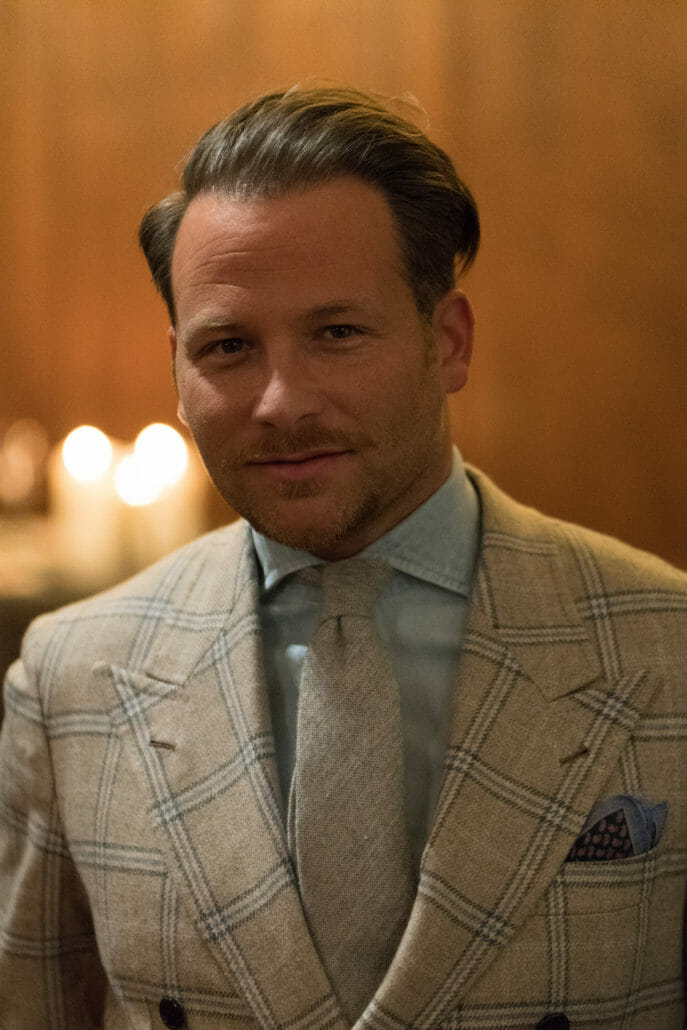
Whatever you choose, one thing you will notice with a checked jacket is how it creates the impression of a wider chest. Tailored menswear has always sought to broaden the shoulders and chest through tricks of lapel width and style and shoulder padding among other things; horizontal lines across the chest created by checks draws the gaze outward to the same effect.
As a general practice, pair your patterned jacket with solid trousers to avoid clashing patterns. Regarding your choice of tie, you can follow two options of layering and either wear a solid tie or go pattern-on-pattern, which requires more skill.
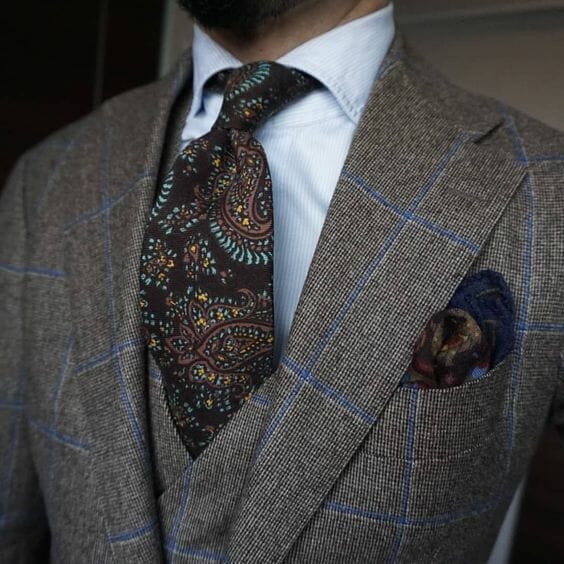
Suits
Because they are strong patterns, any check can become bold if it is used on a two-piece let alone a three-piece suit, with the exception of something like a brown tweed glen check. A windowpane suit, even if the lines are muted, always remains assertive simply because the boxes are large and multiplied over your entire body. Therefore, their acceptability depends on the dress code of your office and how much you want to be noticed. Plaid suits are particularly risky as the loud pattern can easily make you look clownish. Italian style tends to be bolder in making use of plaid suits, especially ones with regularly spaced patterns, but they are still difficult to carry off.
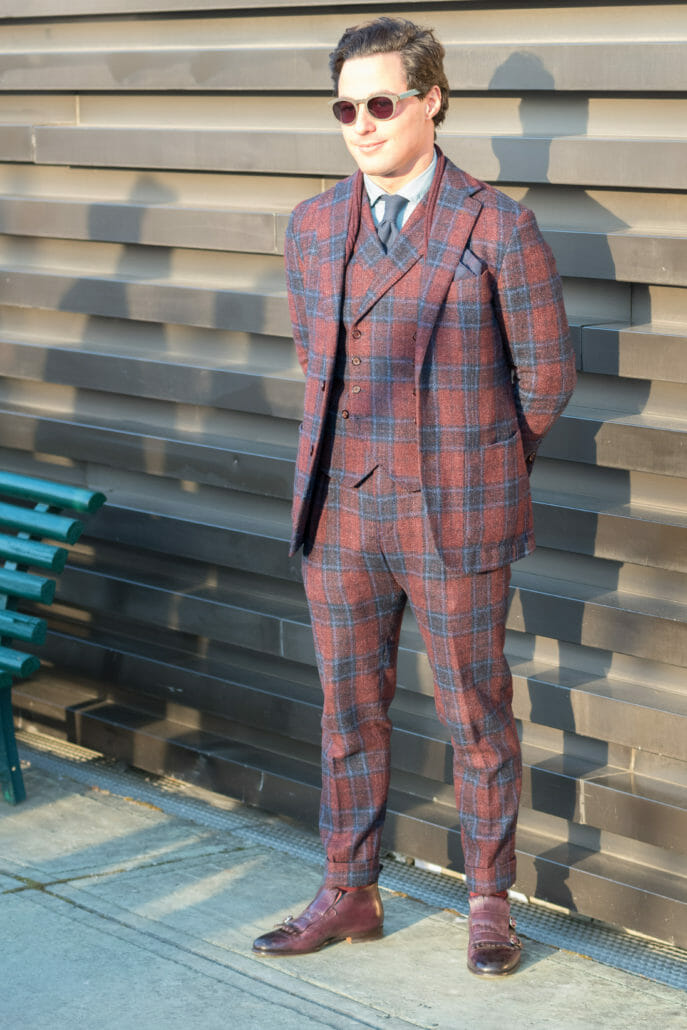
Overcoats
It is said that things you can’t get away with in a jacket, like large peak lapels and aggressive textures, are acceptable with an overcoat. The same goes for checks. Though always a statement, a well-made checked overcoat worn with an otherwise reserved outfit is likely to garner more style compliments as a distinctive feature than other garments that would be considered loud.
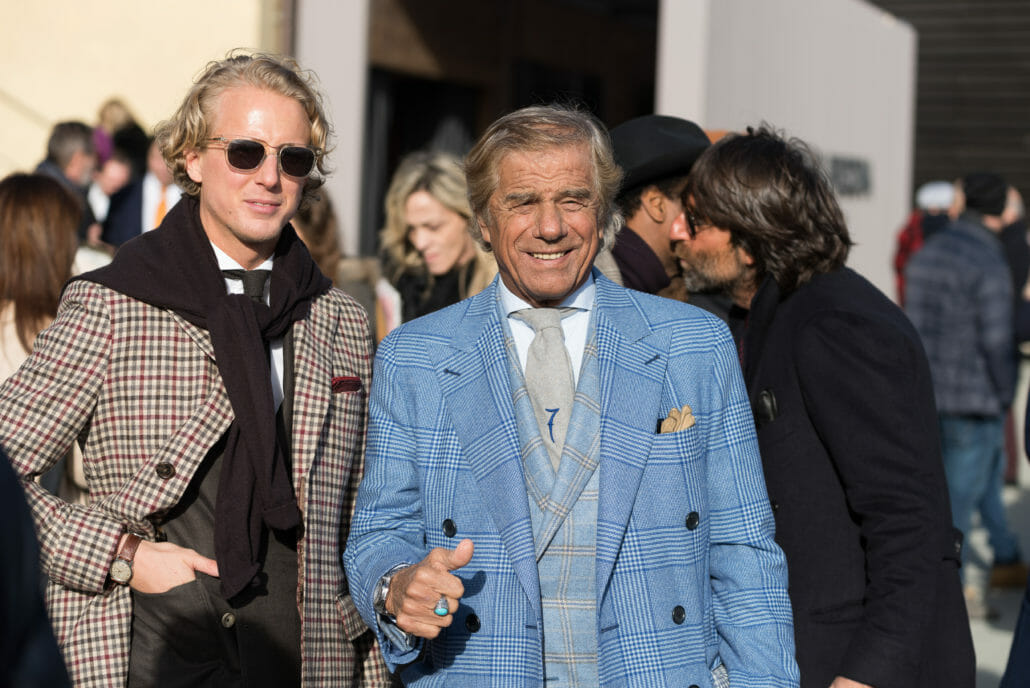
Pants
Checked, typically plaid, trousers appear loud even if your upper body is clad in a solid jacket. Thus, these would best be characterized as a type of “go-to-hell pants” and worn in the same way, as a statement.
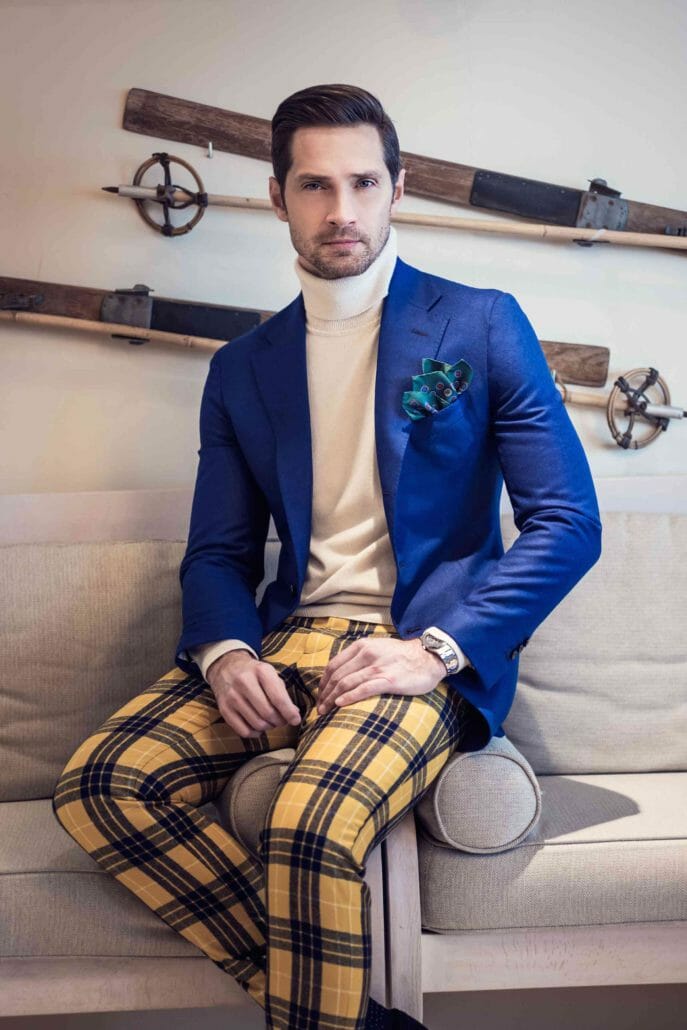
Waistcoats
A great option for wearing checks in tailoring is a waistcoat. The waistcoat has traditionally been a means of introducing bold color or pattern, adding personality and a sense of fun under a staid solid suit. Whereas bold pants are an in-your-face defiance of convention, bold waistcoats are almost expected, and you can match a color in the pattern with that of your jacket.
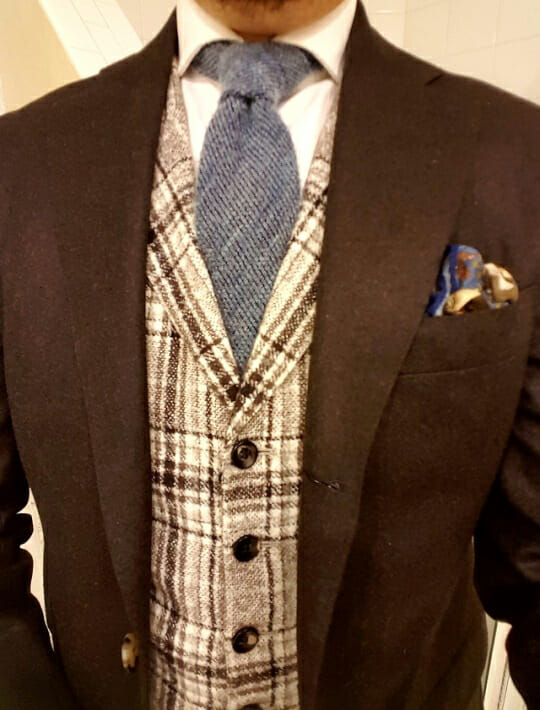
Accessories
As is usually the case with any bold colors or patterns, accessories are a good place to start with checks because they represent a relatively small dose of the pattern and can integrate that bit of interest you want against an otherwise reserved outfit without becoming visually overwhelming. The most commonly represented checks on neckties are windowpanes, shepherd checks, and glen checks/Prince of Wales patterns. Tartans like black are great for casual or wooly winter ties. Notice that when windowpane check appears on a tie, the pattern is displayed on a bias or diagonally to follow the angle of the tip.
In drab winter weather, plaid scarves are a terrific option as well, lending interest and excitement when colors are more muted.
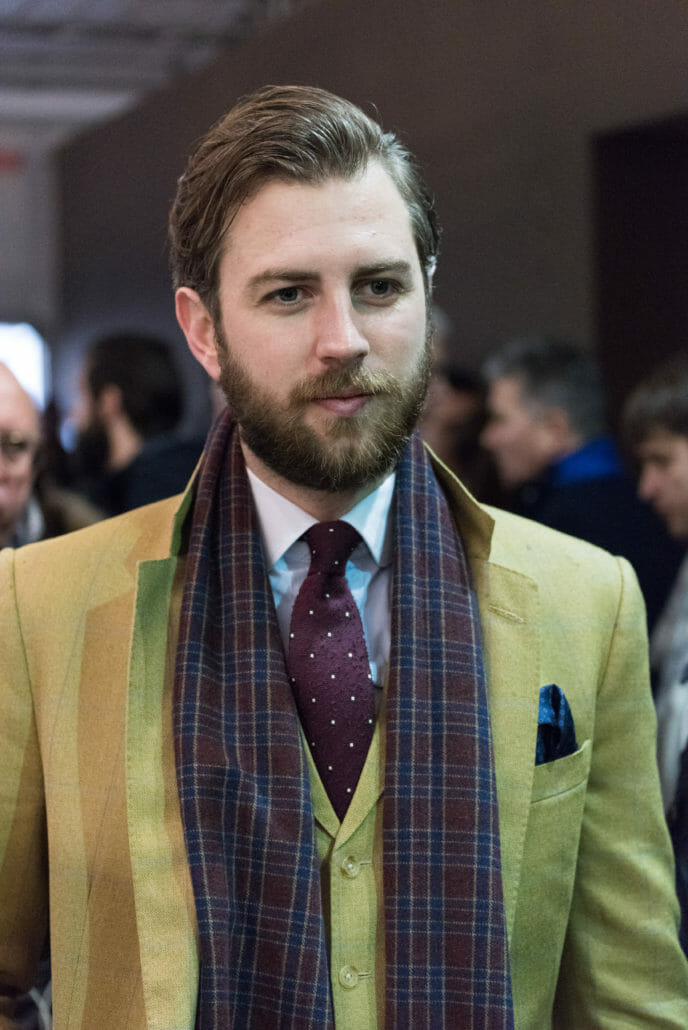
Conclusion
Hopefully, this article has cleared up the distinctions among the various forms of checked fabrics available in menswear. With this information and a bit of practice, you should be able to name a check on sight and even identify hybrid combinations that blend the features of more than one kind of check, like overplaids.
For the most part, checks are patterns that tend toward the casual to varying degrees and that evoke a country heritage–either with American cowboys in the most relaxed sense or with the recreational pursuits of the British country gent. This wide range of possibilities speaks as well to the versatility of checks in your wardrobe, as they are amenable to being dressed up or down. No matter how you wear it, one thing’s for sure–it’s hip to be square.
Outfit Rundown
I’m wearing two different garments with check patterns: my jacket already mentioned which is medium brown and features a windowpane in tan and light blue, and my tie which features a slightly bolder tartan pattern. This is made up of off-white, brown, blue, and even a slight bit of orange. The jacket and tie are working within the same color palette but because both their intensity and density is different enough, they can still harmonize together.
My off white shirt and light khaki trousers are also in this same color family as are my tan socks. They feature a diamond pattern so they’re not technically in checks but they are close. My shoes are also tan in color; they’re cap toe derbys from Allen Edmonds.
Rounding out my outfit today are three types of accessories from Fort Belvedere. First is the Edelweiss boutonniere which again fits into this harmonious color family. This is also true for my light brown linen pocket square which features a blue hand-rolled x-stitch, again reminiscent of the check patterns I’m wearing. Also from Fort Belvedere are my cufflinks which are in gold-plated sterling silver in an Eagle Claw design and they feature blue lapis lazuli as the stone.
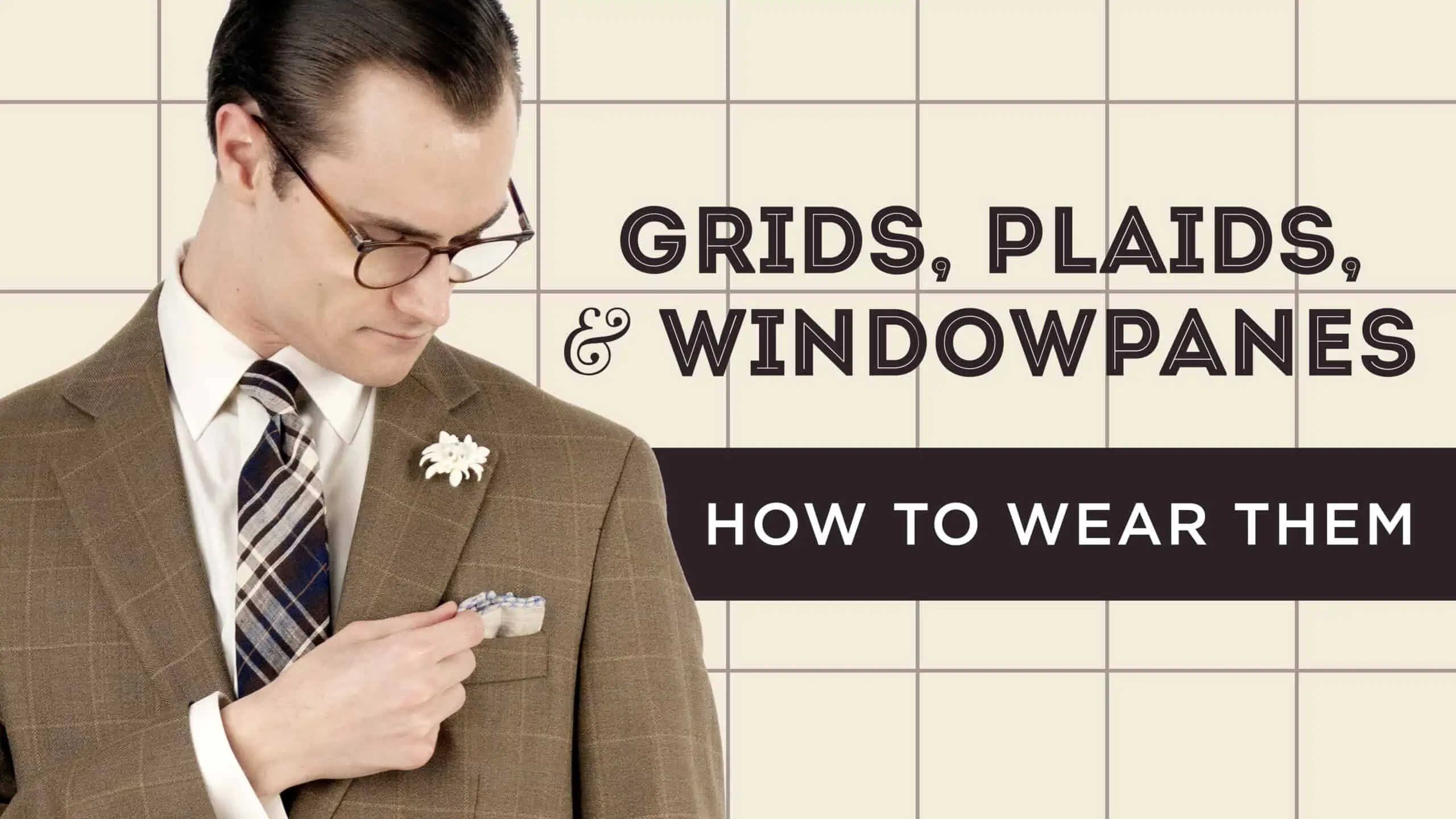
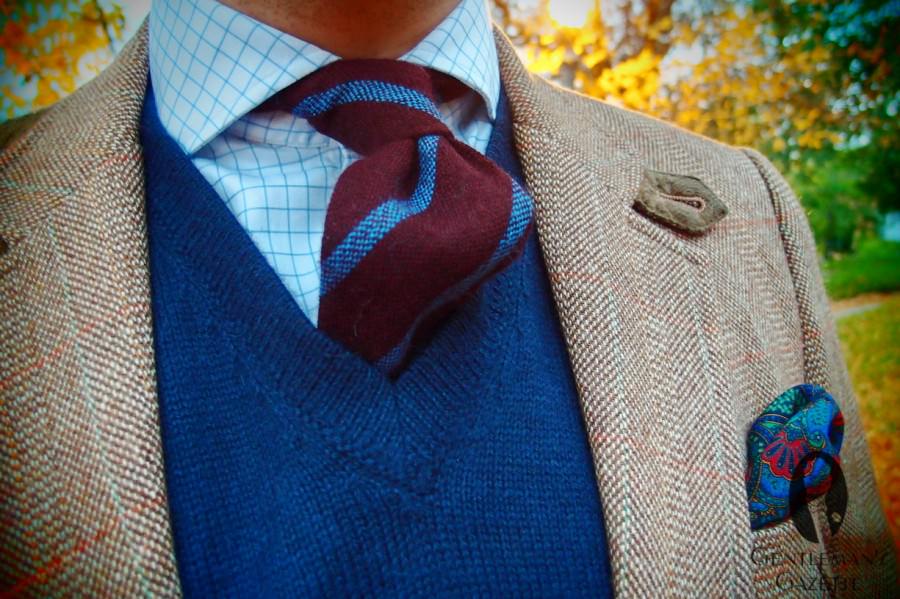
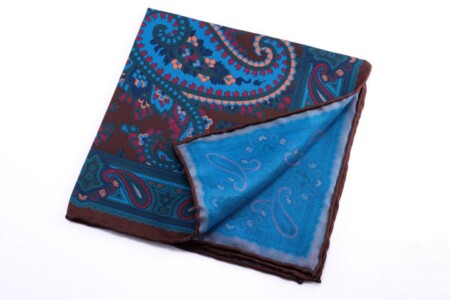
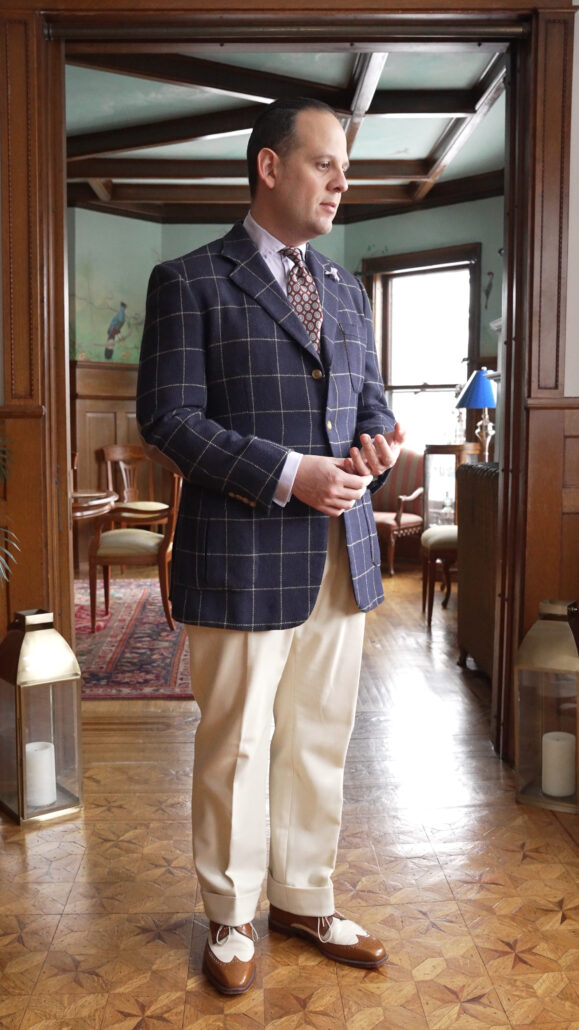
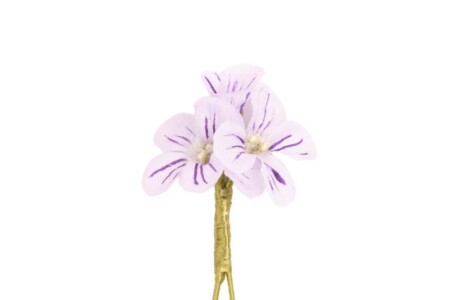
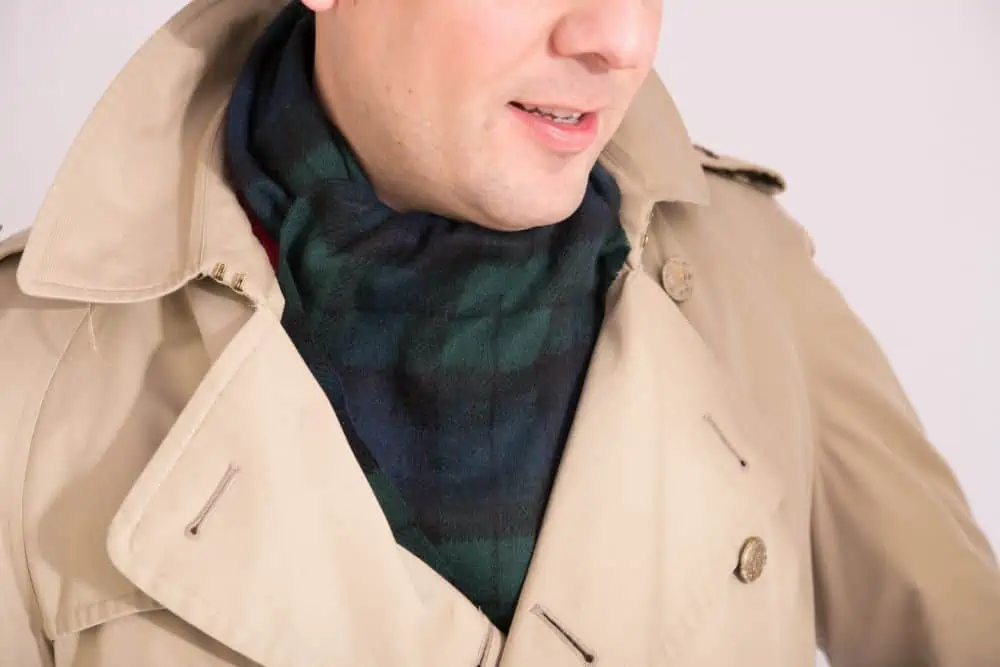
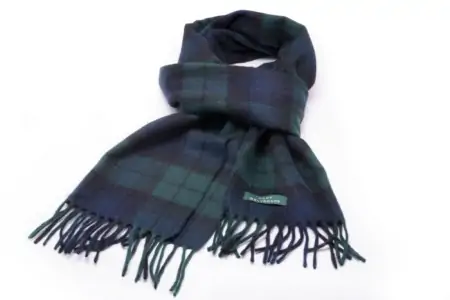
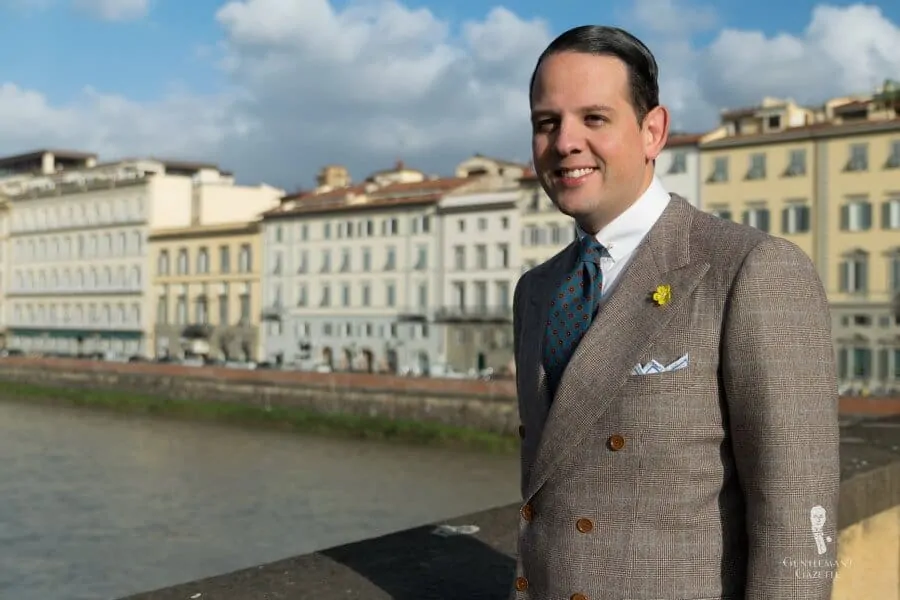
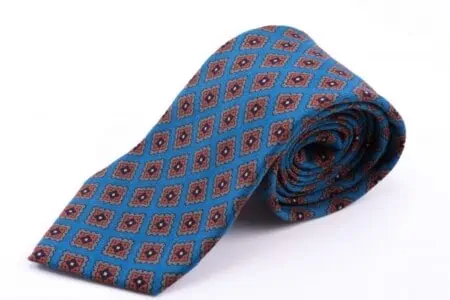
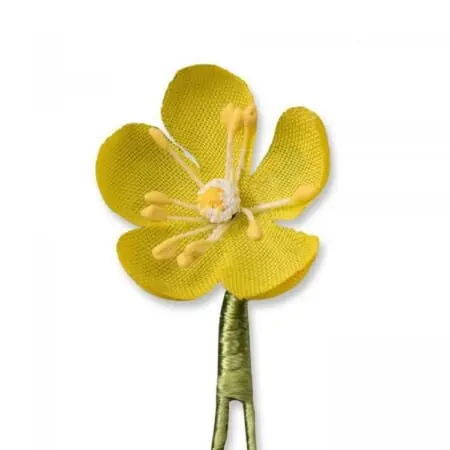
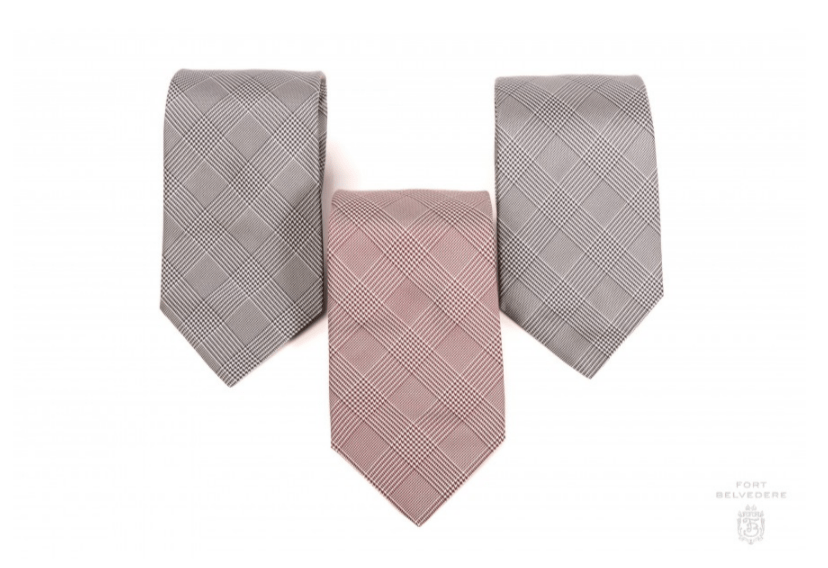
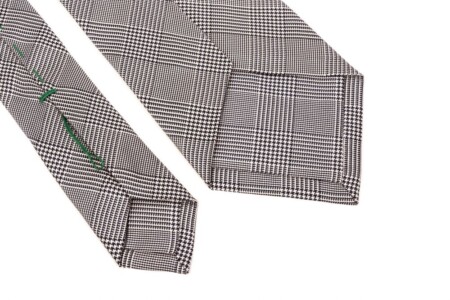
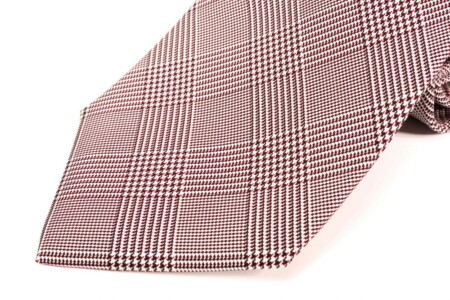
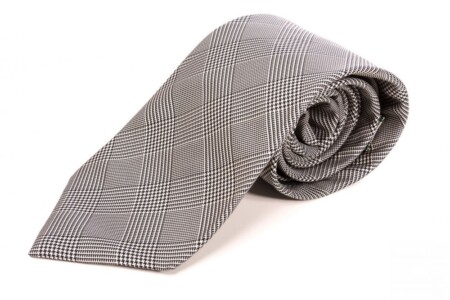
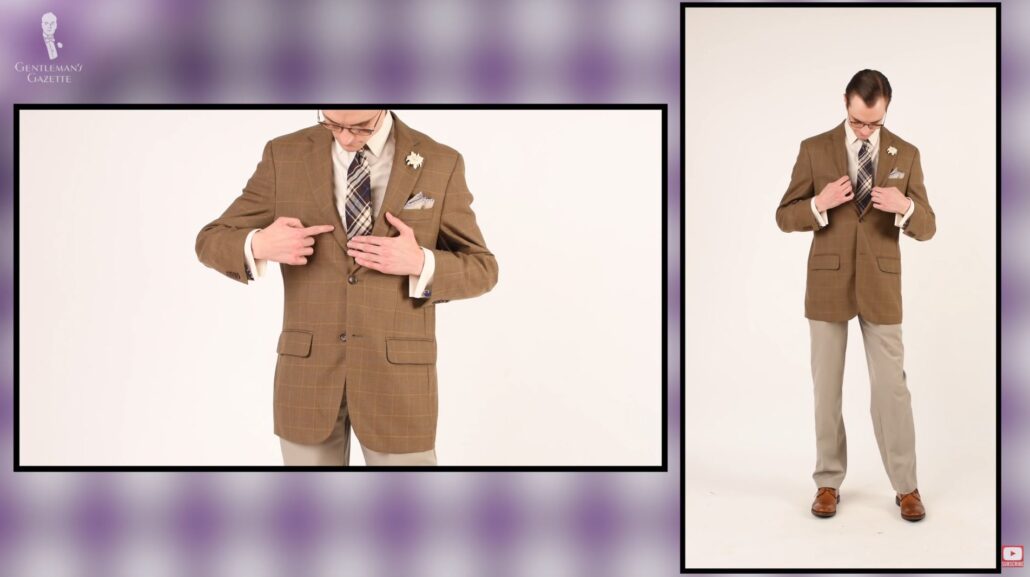
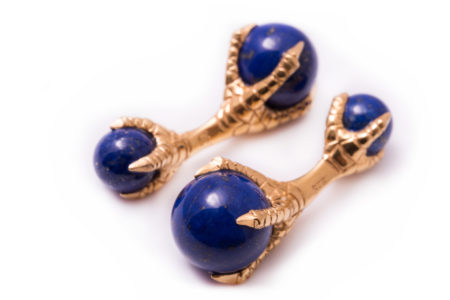
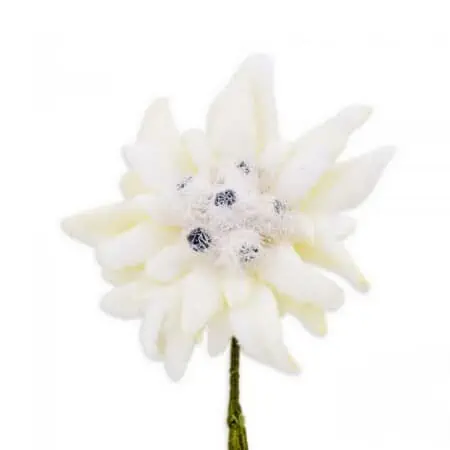
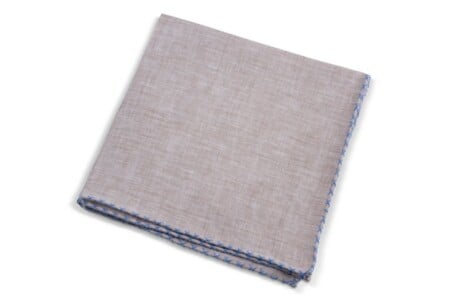
other than the plaid suit- the selections are a delight, but I never see most of them for sale anywhere.
When it comes to this variety of checks, you likely will have to look at specialty menswear boutiques and smaller shops rather than any big retailers.
Super article. Just added a windowpane jacket to my Prince of Wales one, so I’m dipping my toe in, if not fully taking the plunge yet.
Excellent article and one I’m glad I took the time to read and study thoroughly, as at first I almost decided to skip it, since I don’t like box checks — even casual Tattersalls — in stark contrast to my decidedly favorable attitude toward stripes. I always enjoy the uncanny mixture and interplay of history, customs, popular culture, language, and the influence of casual sportswear and style as they all relate to cultural national type and the personality of the wearer in any discussion of menswear — all of which is amply on display here.
As a self-described introverted, “conservative” dresser partial to the English style, I liked your term “reserved outfit” in the section on waistcoats. I own but few “plaid” articles of clothing (a bath robe) or any with checks (and those are all micro-checks) except for one recently acquired Blackwatch tartan scarf — excusable for its muted, dark colors.
Recently I heard a haute couture French stylist — Hugo Jacomet (pictured above in the article) speak of “conventional” dressers in describing British style, not his personal favorite! It troubled me to hear him describe it that way, because I don’t think of myself as a conventional American dresser at all. I hold a hardy dislike for most aspects of American menswear and associated modern customs for dresswear. Yet your use of the word as a noun — “bold pants are an in-your-face defiance of convention, bold waistcoats are almost expected” — relaxes me: I am quite comfortable with that word, used as it is, and own a traditional vest with small, dignified checks that I like a lot. I suppose I am “conventional” in a more cultural, deep-traditional (Euro) sense — as opposed to “loud,” American-style, assertive-aggressive wearers of Don Draperesque-style menswear that reflect the “bolder” personality tastes of the proverbial used car salesmen and those who clearly “want to make a statement.”
Most plaids and checkwear on men hurt my eyes. But I loved your concluding checkerboard remark: “one thing’s for sure–it’s hip to be square.”
Thanks much for sharing, Phillip.
Agree completely!
As a tall man, I already stand out and wearing a tartan patterned suit of jacket would dominate the room.
I like the idea of the waistcoat with an ordinary suit. The prince-of-Wales ties look very good, as well.
Dr Lee,
Personally I like all with the exception of trousers which put too much focus on the lower part of the body.
I select one pattern and then put plain or monotone around it . Try to avoid looking like an accident going somewhere to happen.
Mark, I’m not a fan of “go to hell pants” myself.
A simple graph check under almost any other checked or plaid sport coat is pleasing to my eye if a simple tie is included. GTH pants are a riot and for golfing with Rodney Dangerfield or fraternity parties, but they do have their place simply for their rebelliousness. I am afraid our friend M. Jacomet was caught short and improvised with a bistro tablecloth and napkin.
I think it’s worth noting that not all checked trousers are created equal. I have a number of subtle check and plaid patterns that read as solid colors from a distance and are quite the opposite of loud “go-to-hell” pants. The patterns tend to be subtle due to both the size of the square and rectangular shapes in the patterns (either quite small or quite large) and due to the subtle variation in the colors making up the patterns. In either event, since the trousers come off as a solid color and, even up close, exhibit a very subtle pattern, they pair very well with more assertively checked shirts or sport coats.
Very informative guide – thank you!
You are welcome!
I’m going out right now and buying a pair of plaid Bermuda shorts!